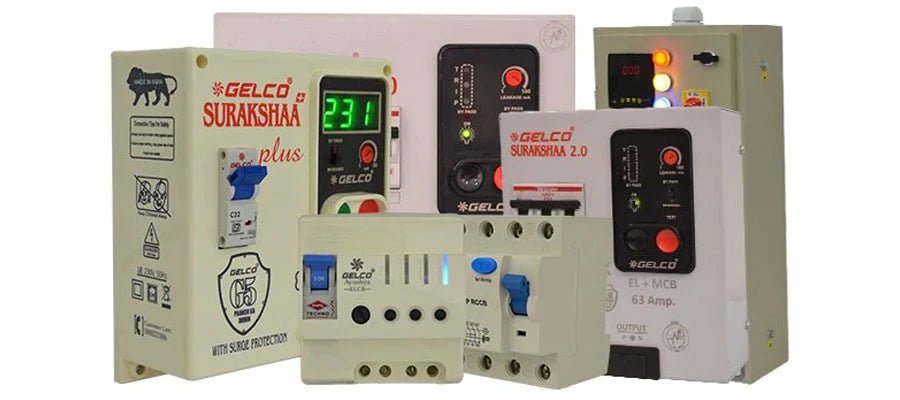Types of Circuit Switch
Although circuit switchers have the same goal in power distribution systems, there are various types of them. Let's delve into these types so that you can determine which one is suitable for your specific application area.
Air-insulated switchgear (AIS)
Air-insulated switchgear (AIS) is a type of high-voltage electrical switchgear that uses air as the primary insulation medium between the electrical conductors and the earth. It is commonly used in power systems and distribution networks to control and protect electrical equipment, such as transformers, circuit breakers, and disconnectors. AIS typically consists of metal-clad equipment with busbars, circuit breakers, and disconnect switches housed in a metal enclosure, which is ventilated to allow for heat dissipation. The main advantage of AIS is its low cost due to the abundance of air as an insulation medium, but it requires regular maintenance to ensure the proper functioning of its components.
Load-Break Switcher
A load break switch (LBS), also known as a disconnect switch or isolator switch, is an electrical switch used to interrupt or isolate an electrical circuit, particularly in medium and high-voltage applications. It is typically used to isolate a section of a power distribution network for maintenance or repair work or to switch loads on and off.
Load break switches are designed to handle high electrical loads and can be operated manually or remotely. They are commonly used in conjunction with other electrical equipment, such as transformers, circuit breakers, and fuses, to protect and control electrical systems.
LBS can be of various types, including air-insulated, gas-insulated, and oil-insulated, depending on the medium used for insulation. They can also be designed as either a single-pole or multi-pole switch, with or without earthing facilities. Load break switches are widely used in power distribution systems, industrial applications, and renewable energy systems.
Gas-insulated switchgear (GIS)
Gas-insulated switchgear (GIS) is a type of high-voltage electrical switchgear that uses a gas such as sulfur hexafluoride (SF6) as the primary insulation medium for its components, instead of air or oil. GIS is typically used in applications where space is limited or extreme environmental conditions exist, such as in urban areas or high altitudes.
Using gas as the insulation medium allows for a much smaller and more compact switchgear design and improved reliability and safety. GIS typically consists of metal-clad equipment with busbars, circuit breakers, disconnectors, and other components housed in a sealed metal enclosure filled with SF6 gas.
The main advantage of GIS is its compact design, which allows for significant space savings compared to traditional air-insulated switchgear. Additionally, GIS is highly reliable and requires minimal maintenance. However, GIS can be more expensive than other switchgear types due to the need for specialized components and the cost of the SF6 gas used for insulation.
Vacuum circuit switcher
A vacuum circuit switcher (VCS) is a type of high-voltage electrical switchgear that uses a vacuum as the arc quenching medium to interrupt electrical current. It is commonly used in power distribution systems, as well as in industrial and commercial applications, to switch and protect electrical equipment.
VCS typically consists of a vacuum interrupter, which is housed in a metal enclosure with other components such as a control panel and operating mechanism. When a current is interrupted, the vacuum within the interrupter extinguishes the arc that is generated as the contacts open, thereby preventing damage to the switchgear and other electrical equipment.
The main advantage of VCS is its high level of reliability and low maintenance requirements, as there are no moving parts that require lubrication or wear out over time. Additionally, VCS are environmentally friendly, as they do not use any harmful gases or liquids in their operation. However, VCS can be more expensive than other switchgear types due to the need for specialized components and materials.
Hybrid circuit switcher
A hybrid circuit switcher (HCS) is a type of high-voltage electrical switchgear that combines the features of both air-insulated switchgear (AIS) and gas-insulated switchgear (GIS) in a single compact unit. It is typically used in power distribution systems, particularly in urban areas or locations where space is limited.
HCS typically consists of a metal enclosure with busbars, circuit breakers, disconnectors, and other components, which are insulated by a combination of air and SF6 gas. This hybrid design allows for a smaller and more compact switchgear solution, while still providing the benefits of both AIS and GIS, such as high reliability, low maintenance, and improved safety.
The main advantage of HCS is its compact design, which allows for significant space savings compared to traditional switchgear designs. Additionally, HCS offers improved safety and reliability, as well as reduced maintenance requirements compared to traditional AIS or GIS. However, HCS can be more expensive than other switchgear types due to the need for specialized components and materials.
In conclusion, circuit switchers are essential components in power distribution systems and are used to control and protect electrical equipment. There are several types of circuit switchers available, including air-insulated switchgear (AIS), gas-insulated switchgear (GIS), vacuum circuit switchers (VCS), and hybrid circuit switchers (HCS). Each type has its advantages and disadvantages, and the selection of a particular type depends on various factors such as the application area, available space, and cost considerations. Overall, circuit switchers play a critical role in ensuring the safe and efficient operation of power systems and are continuously evolving to meet the changing needs of the industry.















